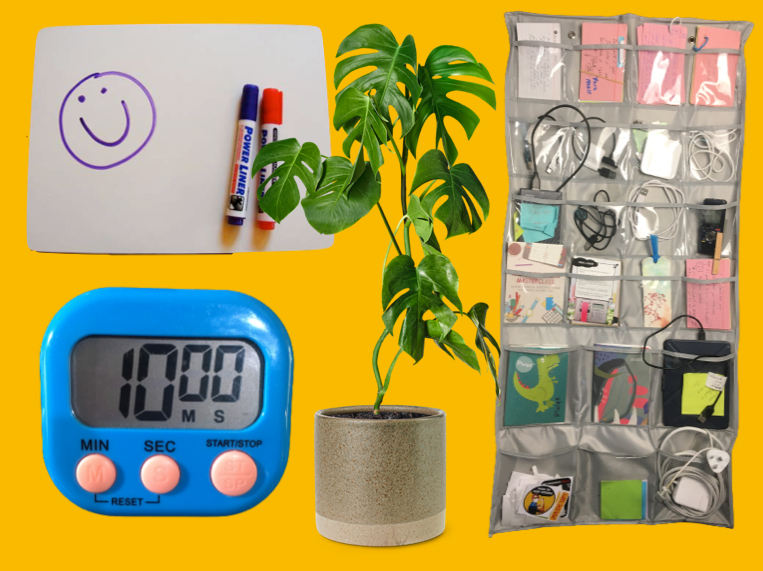
You need to start by doing something different.
As Paul Taylor says in his book Death by Comfort:
“Nothing changes if nothing changes”.
Over the years, I’ve read a lot of books and articles on the psychology of behaviour change. One thing is clear from the research literature: it’s much easier to change your behaviour by changing your context rather than changing your thoughts and attitudes.
In other words, the simplest ways you can create change is to set up your environment to make it easier to do the things you want to do and harder to do the things you don’t want to do.
In this blog, I explore different ways you can tweak your study space to make it easier for you to study and harder for you to get distracted.
Timers are super handy tools, especially when you’re lacking motivation.
Whenever I’m avoiding a task or not feeling in the mood to do something, I’ll say to myself “Let’s just do 10 minutes”. I start the timer and off I go. Usually by the 10 minute mark, the motivation has kicked in and I want to keep going.
Using a timer is a simple and easy way to push through mental blockages. It can also create a sense of time awareness and prompt you to take regular breaks.
Charging cables, flashcards, mini notebooks, and USB sticks: these are just a few examples of random little items that we need. But where do you put this stuff?
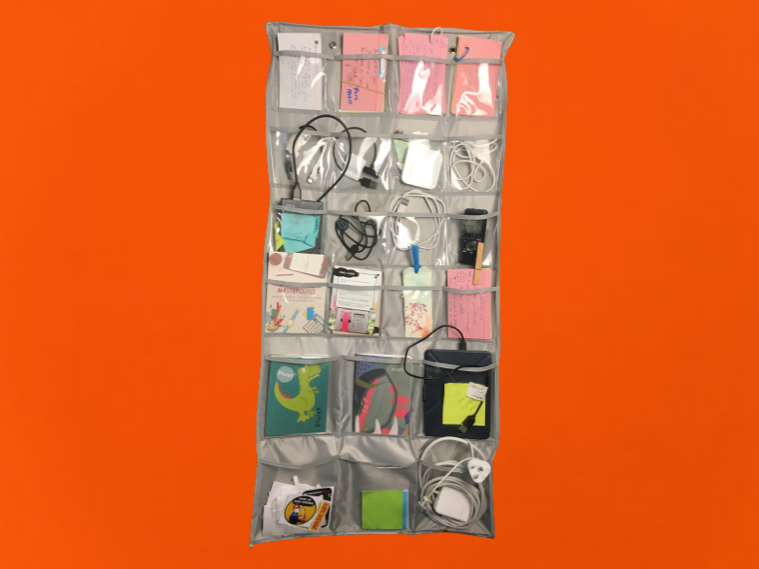
A vertical wall hanger with clear pockets (typically used for storing jewellery) works well for storing and separating these random but important items.
Feeling stressed in your study space? Perhaps it’s clutter that’s getting you down.
Take a moment to scan your environment. If your eyes land on a pile of objects and you find yourself feeling stressed and/or overwhelmed, take those items and dump them into a box. Now take that box and put it in another room. You can sort through these items later on.
Staying hydrated is super important when it comes to learning. Research shows even mild dehydration can impact students’ ability to learn and remember information.
But if there’s no water in sight, you’re probably not going to be taking regular sips.
I have a reusable drink bottle but some people find having to unscrew a lid a barrier to taking sips. If that’s you, have a jug of water and a glass nearby. You might also enjoy using a reusable straw (stainless steel or glass).
Being hungry sucks and it doesn’t serve you when it comes to learning. Your brain needs energy to think and learn. Where does it get that energy from? Food.
Make a start on stocking your fridge and pantry with plenty of healthy snack foods. My favourite snack foods include blueberries, strawberries, and pretty much any fruit, nuts, veggie sticks, and soy yoghurt.

While you’re at it, get rid of any tempting ultra-processed junk food. This junk will mess with your ability to think and learn.
If I can’t see my work and items I need, they don’t exist. This is why I always store important items in clear storage containers and write things I need to do on bright yellow paper and colourful post-it notes. If it’s out of sight, it’s out of mind.
One trick I use is leaving myself post-it note reminders of what I need to do next after I complete each work session. These notes give my brain a clear direction of what it needs to focus on next, which means I’m less likely to get derailed.
When there’s a lot of things happening and multiple projects on the go, it’s easy to lose track of what you need to do.
Using open storage systems (e.g., open bookshelves or pigeonhole units) can be another effective way to keep track of all your projects. I use a pigeon hole to organise all my projects. This keeps them in sight and in mind.
I remember an academic coach once saying to me, “If you start the day by checking your email, you’ll be 10% less productive”.
She was spot on.
When you start the day with devices, this puts you in reactive mode. You feel less in control.
Here’s a little psychological trick I use to get myself into proactive mode: I lock my phone in a kSafe for the first 30 minutes of the day. My phone is already placed in the safe before I go to bed, which means all I need to do is spin the dial and press the button when I get up in the morning.
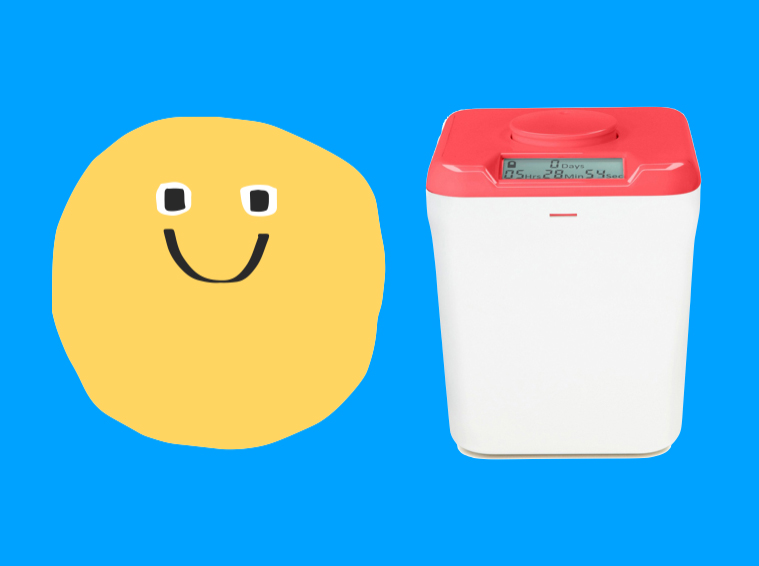
This simple action signals to my brain that I’m in control of my day (and not big tech).
Of course, you don’t need to buy a kSafe to stay off your phone. Placing your phone in a drawer (out of sight) or in another room will also do the job.
You use them to mow the lawn, but a pair of earmuffs work wonders for blocking out noise while you’re trying to study.
They also have signalling power. When you put them on, it signals to others (and your brain) that you are in work/study mode. When you take them off, you are free to play, rest, and do whatever you like.
Having a yearly planner stuck up on your wall can help to create a sense of time awareness. You look up at the planner and you can see in one glance how much time you have between now and when a project is due or when an exam is scheduled.
Indoor plants have been found to boost creativity. But certain types of indoor plants, such as English ivy and the Money plant, also purify the air.
You don’t need to create a jungle to experience the benefits of indoor plants. One or two plants in nice colourful pots is all you need to freshen up your space.
Have you considered working on your feet and incorporating some movement into your study sessions?
Active workstations, such as sit-stand desks, cycle desks, and treadmill desks, help to break the sedentary work cycle, get the blood pumping more efficiently up to your brain, and give you a cognitive boost.
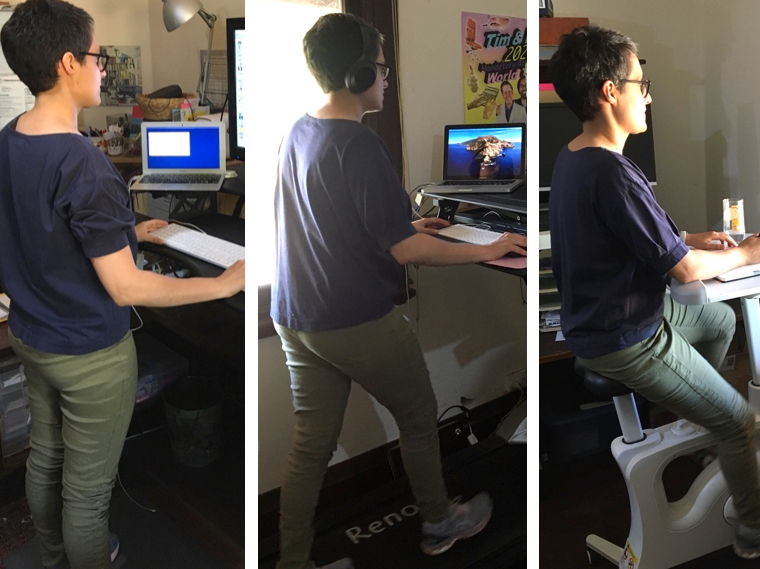
If you prefer to stay seated while you study, that’s no problem. Just make sure you get up and move every 25-30 minutes. Take an exercise snack.
An exercise snack is a quick 30-60 second bout of exercise. I have a few small pieces of exercise equipment strategically placed in my study space to mix up my exercise snacks.
Depending on what you like to do and the space you have available, here are a few ideas:
• Kettlebell
• Dumbbells
• Resistance bands
• Skipping rope
• Gymstick
• Hula hoop
If you feel good in your study space, you’re more likely to want to spend time there. One of the simplest ways to spruce up your space is with colourful and inspiring pictures.
Up on my walls is a colourful world map, a poster from a memorable comedy show I attended with my brother, and a framed piece of children’s artwork.
What do these things all have in common?
They make me feel good. And when I feel good, it’s easier to think, focus, and learn.
After looking at a screen for 25 minutes or so, get down on a yoga mat and do some gentle stretches. If the mat is already rolled out on the floor, it’s a lot easier to get down and stretch your body.
This is a designated spot for all your school items (e.g., books, files, reference materials, unit outlines, practice exam papers, and notes). Need to find something to complete a project or study for a test? There’s only one place it can be: in the magic spot.
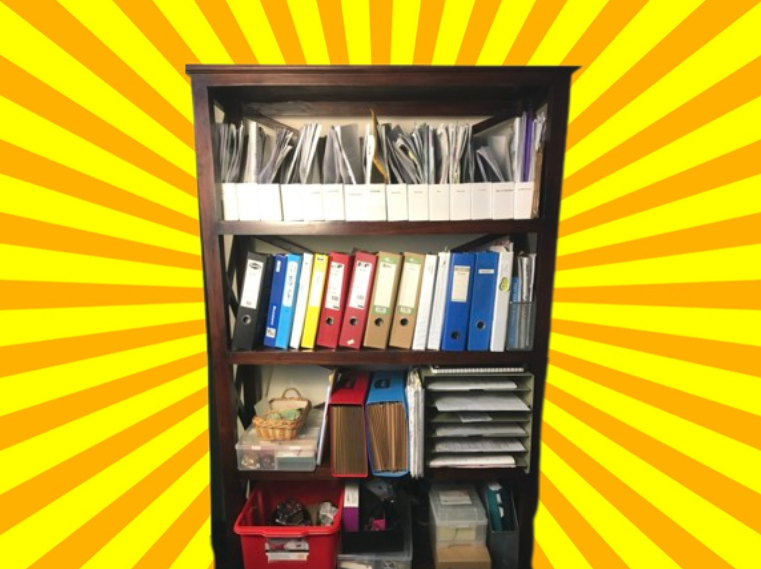
When your work gets difficult, it’s too easy to escape to social media, YouTube, and Netflix. To stop yourself mindlessly checking these apps, activate an Internet blocker app such as Cold Turkey or Freedom.
It’s not just Big Tech companies that can distract us. Often we distract ourselves with all kinds of random thoughts.
How do we handle these thoughts?
You can capture them in a notepad that’s strategically placed within arms’ reach. When a random thought strikes, write it down. You don’t have to act on every thought straight away.
Think of this notepad as your ‘Thought Inbox’. Once you’ve written the thought down, it’s not going anywhere. You can return your focus to the task at hand and deal with these thoughts at a later time.
Ads online are like advertising in public spaces: they constitute visual clutter. They also stir up consumptive desires and frequently throw you off course.
You can eliminate a lot of online ads by installing an adblocker plugin. I use Adblock Plus.
When I’m feeling nervous about putting ideas down on paper, I go to my whiteboard. It’s less scary to jot down ideas on a whiteboard.
If it doesn’t work out, that’s okay. You can easily wipe it all away.
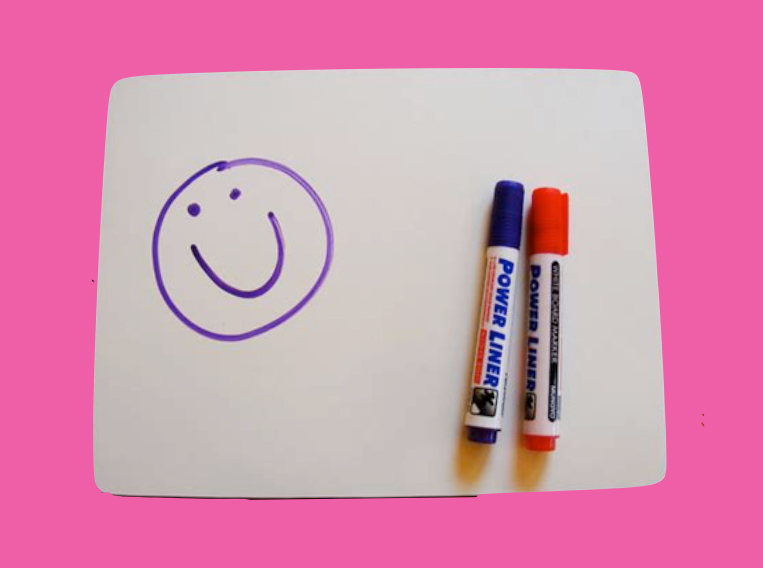
Each of these strategies may not seem like much on their own. But when combined, they can have a big impact on your ability to focus, learn, and get things done.
Like anything in life, the key is not to get bogged down by a sense of overwhelm. You don’t need to make all of these changes all at once. Just get started with one or two.
Share This:
And look, I get it. I can understand why new year’s resolutions have become so unpopular.
It’s frustrating to vow to make a change only to find that you’ve fallen off the bandwagon a few days later.
I’ve been there. I know how dispiriting it can be.
But what if I told you there was a process you could follow that could help you change your behaviour in any area that is important to you?
There is a process. It’s called Behavior Design.
The process takes me about 20-30 minutes (from start to finish).
It’s not a quick fix, but it works.
In my experience, Behavior Design is way more effective than the stock standard strategies you hear about, such as manifesting, vision boards, SMART goals, accountability buddies, etc.
There’s nothing inherently wrong with doing those things. But used on their own, these strategies often set us up to fail.
Behavior Design is different.
This system allows you to “become your own soul’s doctor” (a phrase used by Stoic philosopher Epictetus). Basically, you quit chasing gurus and the latest trends. By following the process, you take control of your life and move yourself in the direction of a flourishing life.
I learnt about Behavior Design from Stanford University Professor BJ Fogg.
Last year, I participated in his online program, Design for Behavior Change, and I’ve been using his system ever since.
Behavior Design is a systematic process that helps you to change your behaviour and design for behaviour change. What I love about Behavior Design is it doesn’t take a one-size-fits-all approach to behaviour change. By using this process, you can pinpoint the behaviours that are the right fit for you.
The foundation of Behavior Design is the Fogg Behavior Model (B = MAP).
This model explains all human behaviour. According to the Fogg Behavior Model, if you want a behaviour to happen, you need three things to occur all at the same time:
If any one of these components is missing, the behaviour won’t happen.
The Behavior Design process takes all of these components into account.
If you just switched off when you saw that long list of steps or read the word ‘Magic wand’, I don’t blame you. It’s a lot. But please, stay with me.
Behavior Design is straightforward (no magic is involved here). Unlike new year’s resolutions, which we tend to set, forget, and abandon, Behavior Design delivers results.
I’m going to walk you through each of these steps for an aspiration of mine that I set for the new year: To build strength (muscle).
Let’s go!
The first step is to get clear on your aspiration (i.e., the goal or outcome).
What do you want to achieve?
Don’t worry about making it a SMART goal. Your aspiration can be vague and abstract.
Here’s one of my aspirations for the new year:
To build strength (muscle).
When I think about building strength, the outcome I want to achieve is training consistently (three weight lifting sessions per week).
I’m not setting a goal to “get a six-pack.” Ugh. Extrinsic goals like this never leave me feeling fulfilled or motivated for long. In contrast, the idea of being someone who trains consistently and is strong and healthy does excite me.
After clarifying your aspiration, you need to think about the concrete behaviours that will help you achieve it.
This is the crucial step we often miss. Too many people stop at setting vague goals when it comes to changing their behaviour, which is their ultimate downfall.
As BJ Fogg says, when we try to motivate ourselves towards an abstraction, this rarely works.
So, here I am, saying I want to build strength to become a ferociously sturdy lady. This is a great idea, but how will I do it?
According to Behavior Design, I need to focus on the concrete behaviours (i.e., the things I can do right now or at a specific point in time) that will help build muscle.
In this step, you imagine you have magical powers and you can get yourself to engage in any behaviour.
The playful Professor Fogg even recommends purchasing a magic wand, waving it, and asking yourself:
“If I could wave a magic wand and get myself to do any behaviour to achieve this aspiration, what would it be?”
After waving my homemade magic wand in the air (made out of a thin stick and electrical tape), I asked myself:
“If I could get myself to engage in any behaviour to build strength, what would it be?”
I wrote down each behaviour on an index card.
Here are some of the behaviours I brainstormed:
BJ Fogg writes in his book Tiny Habits:
“You are not making any decisions or commitments in this step. You are exploring your options. The more behaviors you list, the better. You can tap into your creativity or maybe ask friends for their ideas.”
If you’re struggling to come up with behaviours, you can also use generative AI to help you brainstorm. But there is power in generating your own ideas away from a screen (my advice is to try to do this on your own or with a friend before turning to AI).
Take each of the behaviours you’ve brainstormed and make them crispy. By crispy, BJ Fogg means specific.
For example, ‘Punch boxing bag 10 times (jab, cross)’ is a crispy behaviour compared to ‘Do boxing workout’.
This is where the ‘magic’ happens. In this step, you determine the best behaviours to engage in. BJ Fogg calls these your ‘Golden Behaviours’.
You’ll need a large, clear surface to do this and some index cards (four in total). Each of your crispy behaviours will also need to be written out on index cards.
Fogg breaks this stage down into two rounds.
Here’s what you do in Round 1 . . .
Write down ‘High Impact Behaviour’ and ‘Low Impact Behaviour’ on two index cards. Place the ‘High Impact Behaviour’ card at the top and the ‘Low Impact Behaviour’ at the bottom.
Pick up one of your crispy behaviours (written on a card) and ask:
“How effective is this behaviour in helping me to achieve my aspiration?”
Place it along the vertical continuum. If a behaviour is highly effective in moving you towards achieving your aspiration (e.g., it will have a high impact in helping me to build strength), place it closer to the top. If a behaviour isn’t very effective in moving you towards your goal, put it closer to the bottom.
For example, watching a documentary on women weightlifting may be inspiring and enjoyable, but it won’t help me build strength. For this reason, I placed this card at the bottom of the continuum. But doing five squats regularly would be highly effective at helping me achieve greater leg strength, so I placed this card at the top.
Do this with all your crispy behaviours. The table will get messy, but that’s okay. Trust the process and keep putting your cards down.
That’s Round 1 complete. Now, for Round 2 . . .
Round 2 involves getting grounded in reality. You may have several high impact behaviours, but you may find you’re not motivated or able to do them. What you do next will weed out those behaviours.
Create two more cards: “Yes, I can get myself to do this!” and “No, I can’t get myself to do this.” Place them like so (see image below).
Now, we take each card and ask:
“Can I actually get myself to do this behaviour?”
Move the cards along the horizontal plane.
When I asked myself, “Can I get myself to buy $1000 worth of gym equipment?” my response was “Not a chance!”. Firstly, I don’t have the space for more gym equipment, and secondly, I can’t justify spending more money on gym equipment! I moved this card over to the far left.
Again, don’t overthink it. Move the cards quickly. Go with your gut.
Once you’ve moved all the cards, focus on the second top quadrant. What behaviours do you have in this location?
These are what BJ Fogg calls your ‘Golden Behaviours’.
These behaviours have three things in common:
You want to channel your time, energy, and attention into engaging in these behaviours.
For example, once I had shuffled my cards around in the two rounds, my golden behaviours were:
BJ Fogg recommends selecting three to four Golden Behaviours to focus on. I can see why.
You have a limited amount of time, energy, and attention. Focusing on too many different behaviours for a specific area can be overwhelming. You run the risk of giving up before you even get started.
When I looked at my Golden Behaviours, I realised several behaviours could be combined into a basic workout routine, leaving me with the following four Golden Behaviours:
This step of focus mapping was pleasantly surprising. It gave me insights and clarity about why I had felt stuck with my strength training for so long. Here’s what I realised:
After I had pinpointed my golden behaviours, I immediately texted a friend who is a physiotherapist. I asked if he would help me develop a simple strength training routine. He said yes and started sending links to explore ideas. I was off and running (no pun intended).
Once you’ve completed step 4, you can stop and call it a day. However, there are three other major steps in Behaviour Design that are worth mentioning. If you’re keen to learn more about this fantastic process, keep reading.
When a behaviour is easy to do, it feels fun. You can do it quickly. This means you’re more likely to do it and do it again and again.
Instead of saying to myself, “Lift weights for 1 hour a day” and having no idea what exercises I’d be doing, I say, “Pick up dumbbells and do five overhead presses” or “Look at strength training routine and start with exercise 1”. It may not seem like much, but it’s a start. It’s also infinitely better than letting my dumbbells sit and collect dust.
If you want to learn more about making behaviours easier, I highly recommend checking out BJ Fogg’s book Tiny Habits (one of my favourite books).
A prompt is a trigger. It reminds you to engage in the desired behaviour. It says to your brain, “Pick up your dumbbells now!”.
The excellent news for me (and all of us) is we don’t have to hire a life coach or personal trainer to be prompted to take action. According to BJ Fogg, the best prompts are things you already do on a regular basis (i.e., pre-existing habits).
Think of behaviours like having breakfast, brushing your teeth, or having a shower. These are all excellent prompts that you can piggyback a new behaviour onto.
For instance, I have a pre-established habit of running on my treadmill every morning. Since I’m already in gym clothes, this is an ideal prompt for a quick strength training session. Here’s what I came up with:
After I finish running on my treadmill (prompt),
I will pick up my dumbbells and do five presses (new behaviour).
I can do more than five dumbbell presses, but I tell myself five is the minimum required to keep the habit alive.
Once you’ve found a place for your new desired behaviours in your daily routine, it’s time to get to work and test things out.
After engaging in a new behaviour, it’s super important to give yourself lots of positive reinforcement. Fogg calls this ‘celebration’. You can say to yourself, “Great work!” or clap your hands. You need to release positive emotions.
This may sound a bit cheesy and over-the-top, but do not skip this critical step. These positive emotions help to wire in the new behaviours as habits.
If a new behaviour isn’t working for you, that’s okay. Play around with it. Ask yourself the following questions:
For instance, after my morning run, I did a 15-minute strength session on the Peloton app using some resistance bands. Some exercises weren’t my cup of tea, so I tweaked the workout.
When it comes to behaviour change, don’t take yourself too seriously. You’ll do better and have more fun by approaching change with a playful mindset.
Behavior Design allows you to be your own self-help guru. Rather than following generic advice, you get to develop your own tailored solutions, which is incredibly powerful.
The other powerful thing about Behavior Design is that you don’t have to psych yourself up to engage in your ‘Golden Behaviours’. You’ve selected behaviours you want to do, so very little motivation is required.
I understand that this may seem complicated, but trust me, this process is extremely practical.
Do yourself a favour: sit down and try following the steps involved in Behavior Design. The more you do it, the easier it becomes. And unlike new year’s resolutions, this process delivers lasting change.

This is despite the fact plenty of research shows we’d be less stressed, have more energy, and feel more relaxed if we spent more time out in nature.
Nature is a powerful antidote to the stresses and pressures of modern life.
With this in mind, I’ve been experimenting with creative ways to get my daily dose of nature. One strategy I’ve been testing out is working outside.
I recently listened to a podcast interview with Kim Stanley Robinson (author of The Ministry for the Future). Kim has been writing books outdoors for the last 15 years. In fact, he believes this is what saved his writing career.

On the podcast Wild with Sarah Wilson, he mentioned how this interesting habit came about. He said:
“I was feeling tired of writing . . . burnt out. And then I moved outdoors to a café table that’s in a courtyard that’s fenced in by the side of the house. There’s a Japanese maple shading it but it wasn’t quite enough shade for the laptop screen. So I slung a tarp from the fence and tree branches.”
He later added:
“I realised I wasn’t sick of writing. I was sick of being indoors all day.”
For Kim, writing outdoors has been a joy and an exhilarating experience. “The little birds are my office mates”, he said.
After listening to this interview, I thought “What have I been doing all this time?”
I knew I needed to head outdoors and set up a second workspace.
I didn’t waste any time. I went on Gumtree and found a cute retro vintage table with drawers. It fit perfectly in the space I had available on my back verandah.
Mosquitos are a real problem in my neighbourhood. Like a phone pinging constantly, they are a source of distraction and irritation.
To combat this problem, I purchased a secondhand mosquito net for $5 to hang over my workspace. Upon inspection, the net had one little hole but this was easily fixed with a needle and some thread. With a couple of clothes pegs, I am able to close the opening of the net so mosquitos can’t get in.

I can’t tell you how satisfying it is every time I am working away and I see a mosquito buzzing on the outside of the net. I think “Victory!”.
With my outdoor workspace, I need to be able to easily access the right tools and stationery once I enter the netted space. I don’t want to have to get up and unpeg the mosquito net every few minutes and risk a pesky mosquito entering my space.
• Pads of paper
• Pencils and gel pens
• Coloured pens
• Post-it notes
• Electronic timers (to track my work sessions and breaks)
• Water bottle and glass
• A couple of solid rocks (to act as paper weights so my papers don’t fly away when it’s windy)
• Ergonomic laptop stand (to prevent neck strain), a keyboard, and mouse
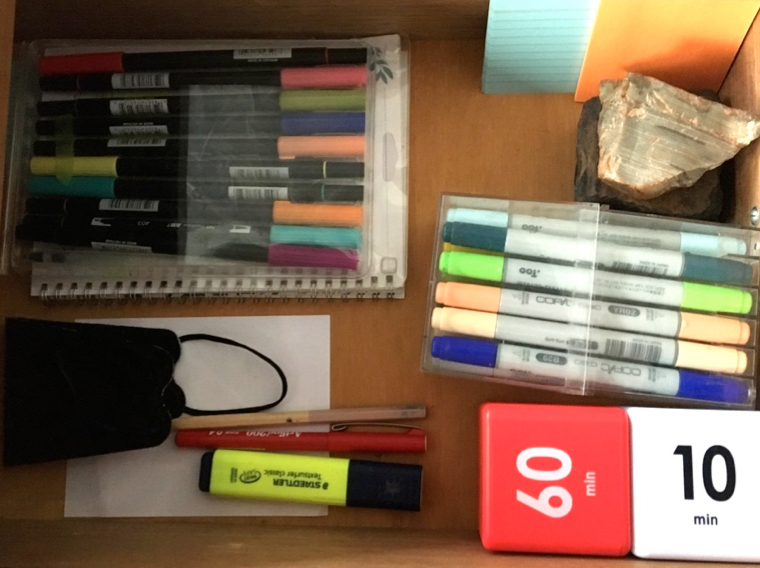
Having these items within arms reach means I can get into a flow state quickly and stay in flow.
When I’m working outdoors, I have a simple rule: my mobile phone is off limits (I leave it inside the house). It’s amazing how when my work gets difficult, instead of checking my phone to get a quick shot of dopamine, I’ll notice a little bird or a wasp flying nearby. This gives me a mini mental break without getting completely derailed and losing sight of what I need to be doing.
This is probably the biggest downside associated with working outdoors. You have no control over the elements.
If you live in a warm climate like I do, you may want to set up a fan. Kim Stanley Robinson who lives in California installed one of those misting devices that pubs and cafes use in their outdoor areas to keep customers cool. He says this keeps him cool during Summer.
I live in Western Australia where in Summer it’s easy to feel like you’re being slow roasted outside. When it gets too hot, it’s hard to think and near impossible to learn.
Similarly, when it’s too cold, I can’t focus and learn for the life of me!

But in Winter, you can layer up. You can put on a warm jumper, beanie, some uggboots, and/or use a blanket. Kim Stanley Robinson says in the colder months he puts on his mountaineering gear to write outdoors. He sometimes even uses an electric heating pad for his feet.
Bottom line is this: do what you need to do to be comfortable in your outdoor workspace.
I understand Kim and I are both in privileged positions. Not everyone has a backyard, verandah, and/or the space to set up an office outside.
If you don’t have a backyard, here’s what I would recommend: create a mobile office. This is a backpack that contains everything you need to do your work.
Then, take your backpack to a local park (ideally one that has plenty of shade) and set yourself up at a picnic table.

Alternatively, simply having a picture or painting of a natural environment in your study space and looking at it from time to time can be beneficial. This study found staring at a picture of a flowering meadow green roof for just 40 seconds was associated with better sustained attention.
Indoor plants are a fabulous investment, too. Having indoor plants in your space has been found to boost creativity (you can check out the research here).
In a world where we are becoming increasingly disconnected from the natural environment, working outdoors can be a great way to get a good dose of nature.
Since setting up my outdoor office space, I’ve noticed so many wonderful little creatures in my garden that I normally wouldn’t see (mainly birds and bandicoots). I also feel calmer and more energised at the end of the day. I can focus better, too.
I strongly encourage you to invite a little more nature into your life, whether it be by setting up a desk outside or adding some indoors plant to your study space.
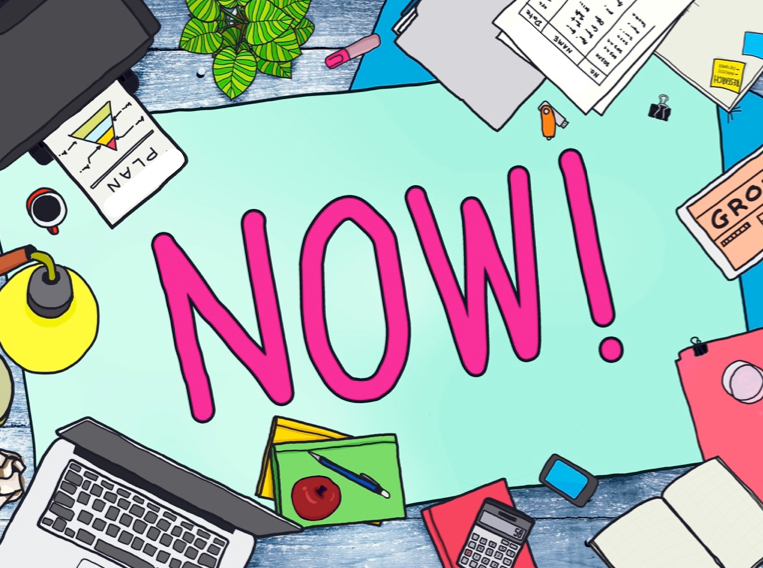
All of us have had the experience of watching videos instead of writing an essay. We can all relate to telling ourselves, “I’ll do it tomorrow”.
The problem is our brains are wired for comfort. We’ll try to do everything we can to avoid experiencing pain and discomfort. But through our avoidance behaviour, we ultimately create more pain and suffering for our Future Selves.
You can avoid working on a project, but eventually your Future Self will have to pay the price.
As Dr Benjamin Hardy states in his book Be Your Future Self Now:
“The more you put your Future Self in debt in terms of health, learning, finances, and time, the more painful and costly will be the eventual toll. There will be a lot of interest to pay if you continually accrue debt.”
This is why it really helps to cultivate habits and develop systems that help you get started with your work early (well before the deadline).
Over the last few months, I’ve come across several novel and effective ways people are combatting procrastination around the world. I write about each of these below.
The Manuscript Writing Café is a place where writers go to avoid distractions and meet their writing deadlines.
This is a disciplined environment where the owner Takuya Kawai won’t tolerate socialising over drinks. As Kawai states in a social media post:
“The Manuscript Writing Cafe only allows in people who have a writing deadline to face! It’s in order to maintain a level of focus and tense atmosphere at the cafe! Thank you for your understanding.”
In order for this café to run smoothly, Kawai has established a set of rules writers must follow upon entering.
Here’s how it works:
When you enter the café, you commit to a specific goal (how many words you want to write) and a time you plan on finishing. You write this down on a goal card.

You then select from three levels of progress checks:
1) Mild: You get a progress check at the time of payment
2) Normal: You get a progress check every hour
3) Hard: Staff frequently stand behind you and watch you working.
You can’t leave the café until you finish your writing goal.
Once you complete your writing goal, your goal card is stamped with a cute Japanese stamp and displayed on the wall with all the other completed goals.
Let’s unpack the psychology of how this clever café works . . .
Besides the fact you are working in a focus friendly environment away from all your usual distractions, it helps that you are in the company of other people who are also working towards clear goals.
When a staff member stands over your shoulder, you don’t want them to see you scrolling through social media or checking your email. You want them to look at you and think, “Oh wow! This person is super focused and on a roll. Look at them go!”
If you go to this café enough times and achieve a feeling of success after completing each writing goal, your identity will begin to shift. Instead of seeing yourself as someone who procrastinates, you start to see yourself as the sort of person who just gets on with doing the work.
It also costs money to be there. It is 130 yen ($1.30 AUD) for the first 30 minutes and then it increases to 300 yen ($3 AUD) per hour. Being charged a fee provides incentive to just get on with doing your work (procrastination equals parting with your hard earned money).
The owner insists his café is a supportive environment and his tactics are not heavy handed. He states:
“As a result, what they [the writers] thought would take a day was actually completed in three hours, or tasks that usually take three hours were done in one.”
You may not have an anti-procrastination café in your neighbourhood, but there’s nothing to stop you from setting up your own writing café experience and applying the same or similar rules.
This is what a group of PhD students and I did to help us write our theses (you can read more about this here).
This event is run by a number of universities around the world. Students are encouraged to come along with a work project they have been avoiding.
Educators, mental health nurses, therapy dogs, librarians, and academic coaches are on standby, ready to help students tackle their specific procrastination issues.

For instance, if a student is procrastinating with writing an essay because they don’t know how to write an academic essay, they can get help from an academic coach.
If a student is procrastinating because they get easily distracted, they can receive coaching on various strategies, such as the Pomodoro Technique, that will help them to deal with distractions and focus their mind.
When it comes to procrastination, there is no one size fits all approach. Nights Against Procrastination are popular and effective because they offer students a smorgasbord of different strategies and solutions to combat procrastination.
The Beeminder app is a commitment device/goal setting app that helps you stay on track with achieving your goals. Here’s how it works:
You commit to a goal (e.g., Read 70 pages per week). You set a daily target (e.g., 10 pages per day). If you get derailed from achieving your goal, you get stung with a charge from your credit card (you pledge the particular amount).

It sounds harsh but this app is your accountability buddy. There’s a real consequence associated with not engaging in the behaviour. This can give you the extra motivational boost you need to make a start.
The great thing about this app is it integrates with other apps and programs (e.g., Fitbit, Garmin, Duolingo, and RescueTime). Once you set up these integrations it’s a lot harder for you to weasel out of your goals. The data gets automatically imported into the Beeminder app and the data speaks for itself. You either achieved your daily goal or you didn’t.
If you’re going to use this app, you need to be really clear about your goals. And you need to be serious about achieving them because let’s face it, losing money hurts.
Cave Days are online focused work sprint sessions that take place on Zoom. You’re instructed to leave your camera on, put your phone away, close any unnecessary tabs, and work for 45 – 52 minutes. Before your work sprint session, you set a goal for what you want to accomplish.

These work sessions are facilitated by a ‘Trained Cave Guide’. The Cave Guide doesn’t tell you the exact time the session will go for because they don’t want you to be watching the clock the entire time. At the end of each work session, your Cave Guide will facilitate short break activities.
If you want to check this out, you can register for a free 7 day trial to see if this work method works for you.
There are many different ways you can combat procrastination. But be careful – searching for the perfect solution can become a form of procrastination!
The thing is there is no perfect solution. When it comes to doing difficult work, here’s what I find makes a difference: having your phone away from your body (preferably in another room), being clear on what you need to do, taking a deep breath, and getting started with a small task (even if you don’t feel like doing it).
Dr Jane Genovese delivers interactive and engaging study skills sessions for Australian secondary schools. She has worked with thousands of secondary students, parents, teachers and lifelong learners over the past 15 years.
Get FREE study and life strategies by signing up to Dr Jane’s newsletter:
© 2025 Learning Fundamentals